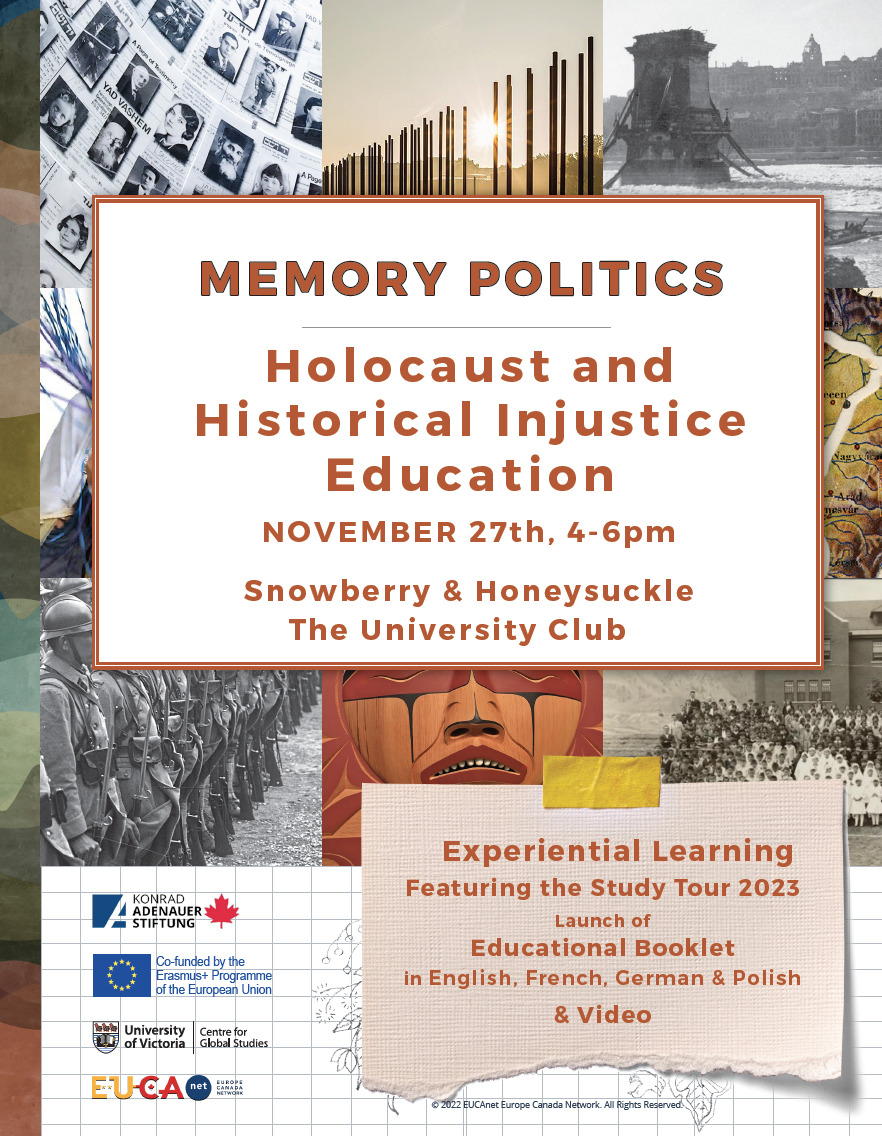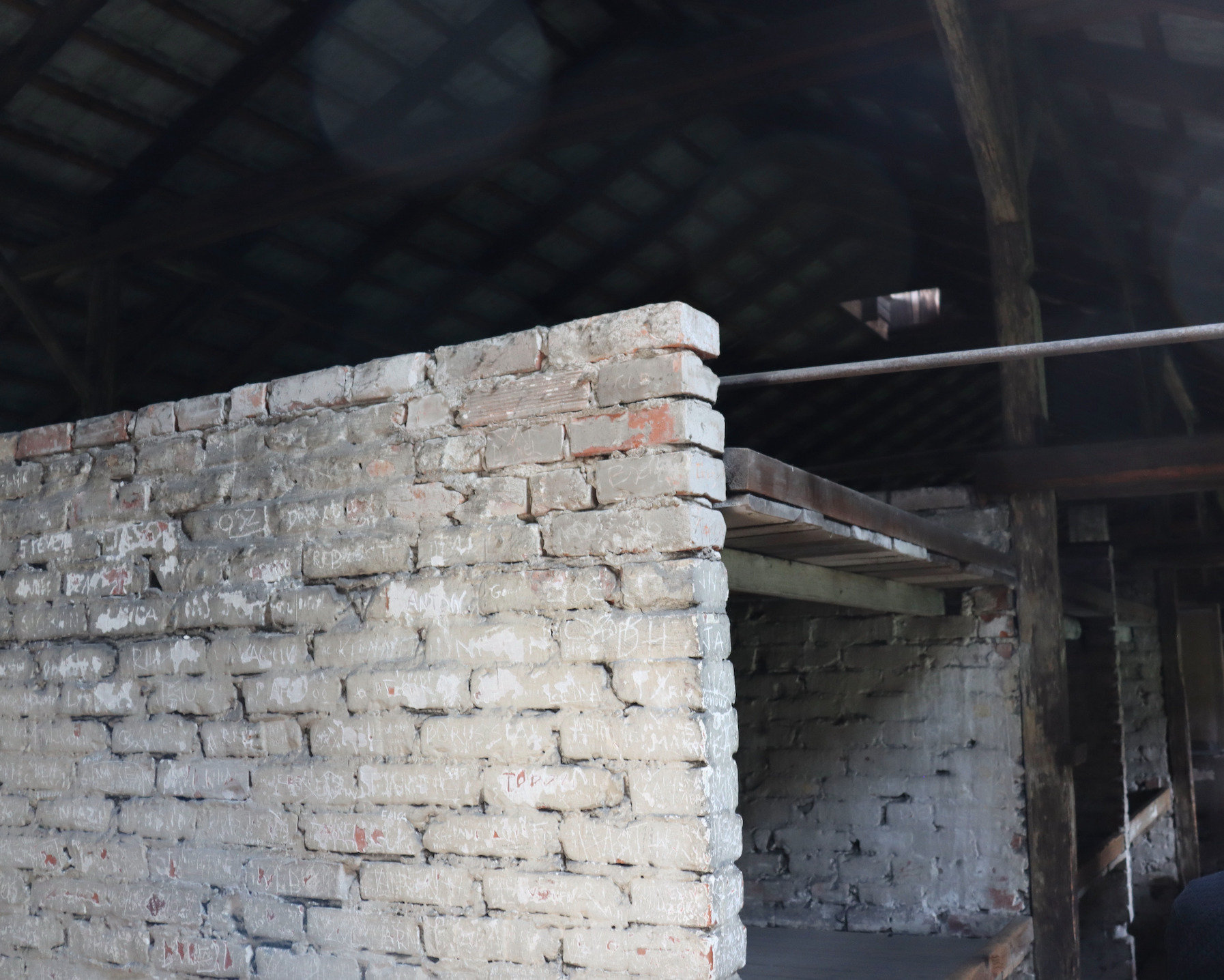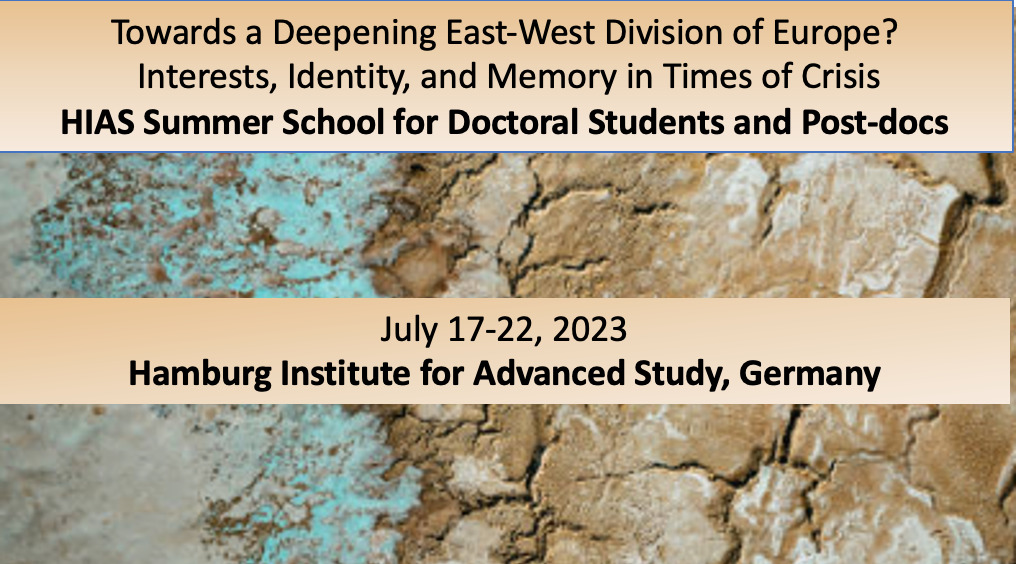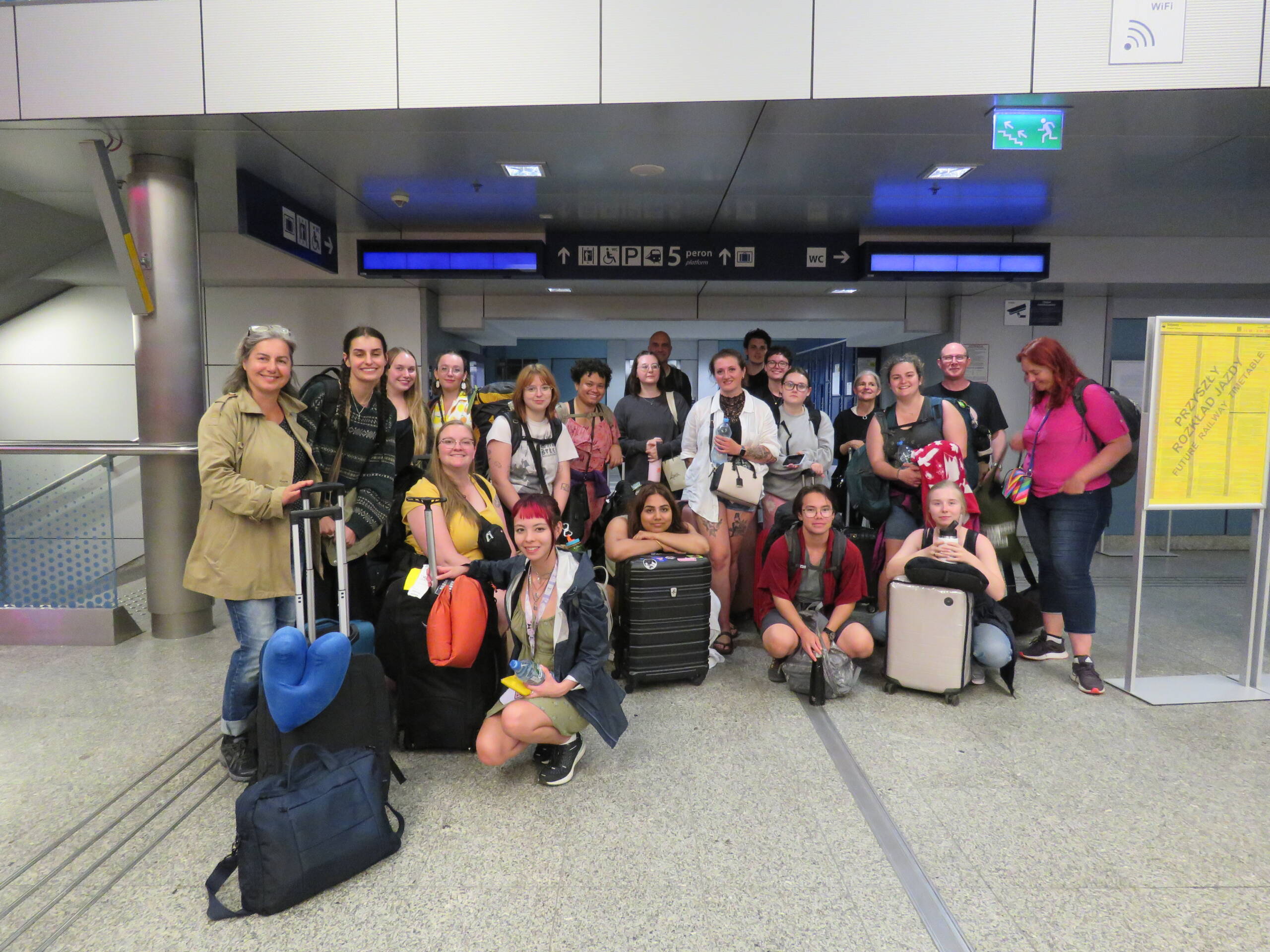Intergenerational trauma presentation and the visit to the House of Terror, Budapest
On the second day of the conference on memory politics in Budapest during our study tour in European Memory Politics (with nearly two weeks of travel and intense discussion on heavy topics – especially following our two-day visit to Auschwitz-Birkenau), I think it’s safe to say we were all feeling a little burnt out and desperate for a break. And yet, we were all still determined to muscle through and learn as much as we could. To get a bit of both in, Sarah and I (August) decided to divide and conquer. Sarah attended the panels in the morning, then I showed up for the group’s afternoon excursion to the House of Terror.
I (Sarah) was really looking forward to today’s panels, as the main topic of today was intergenerational trauma. Two different scholars presented two different case studies of those impacted by forgotten trauma, millennials who grew up in former Yugoslavia during the 1990s, and Jewish refugee survivors in postwar-Poland.
Scholar Karolina Lendák-Kabók gave a brilliant presentation on what the world looked like for the millennials of Bosnia, Croatia, and Serbia, who were children during the Yugoslavia wars, and how the events of their childhood continue to impact them through their untold trauma.
On a societal level, there is a collective memory shared amongst the children of the time of not only the physical violence that the war brought, but also the anxiety of poverty which loomed over most families, as a result of losing their paternal figure to enlistment, and therefore losing a main source of income. There is also a sense of forgotten victimhood, given that it was their elder family members (most often their fathers) that were affected by the wars directly, with the children forced to deal with the repercussions in the shadows of their elders. Within a familial level, these children had to watch their fathers return from war a different person than from when they had left. They often had to watch their fathers struggle with alcoholism to cope, and had their families split apart because of it.
Another presentation given by scholar Lidia Zessin-Jurek, discussed the forgotten trauma of Jewish refugee survivors, who had been forced into labour camps in Siberia at the beginning of WWII, and returned back to Poland only to discover what had happened to the members of their communities who had stayed in Poland during the Holocaust. These surviving Polish Jews then had to decide which trauma they would choose to remember: their own, or those who had perished in the Holocaust (and as a result, would have to forfeit acknowledging their own).
As mentioned before, this was a topic that really interested me, as I am a Linguistics student who has done a fair amount of research on Indigenous language revitalization, which happened as a result of the traumatic residential school system of North America. I was hoping that hearing the stories of how others have dealt with intergenerational or forgotten trauma would be helpful to hear as someone whose field of study is very closely connected with those who have also had to experience such trauma.
As many others on the trip have expressed, I wish that the time given for the presentations wasn’t so short, but despite the limited time, I was still able to find great knowledge and inspiration in them, especially in the ability that memory has to give agency to victims of tragedy in choosing their own memory of past events.
After the panels in the morning, we headed out to the House of Terror, which was an experience, to put it lightly. Stepping foot into the first room–painted bright red with rock music blaring–I knew we were in for a wild ride. Our tour guide’s voice flowed through our headsets, describing a multitude of torture methods used in this very building by the Arrow Cross and Communist parties.
Most memorably, our guide brought us into a room containing a sleek black car shrouded in a black veil. Imagine you’re in your home, he told us. And then you hear it. He pressed a bell, a sharp RING that made us all jump. You hear that, and out of the window you see that car parked on your boulevard. It’s the Communists, here to take you away. You’re never going to see your family again.
It was narratives like this that he continually weaved as we followed from room to room. Though the museum was advertised to be about both the fascist and communist regimes, it was the crimes of the latter that he was certain to emphasize, filling the tour with endless stories of sexual assault and torture, repeating the phrase just like the Holocaust like a mantra.
In later reflection sessions, we were all extremely critical of the museum’s narrative, particularly with the way our tour guide continually equated the communist regime to the Holocaust. As, I think, we rightly should be. That said, I think we lost sight of how effective the experience was.
I didn’t like museums until my late-teens. I found the blocks of texts overwhelming, and would quickly become bored and exhausted, apathetic to the walls of facts I had to force myself to read. But the House of Terror was entertaining. The tour guide didn’t just lecture us about facts, he told us stories. Though problematic, it was extremely effective in creating an engaging experience. I would’ve been fully immersed when I was younger, but even now I think it was fascinating to see that kind of memory politics in action.
Sarah Robinson is a fourth year student at the University of Victoria, working towards a BA with a major in Linguistics and a minor in Film Studies.
August Kirste-Yee is a fourth-year student at the University of Victoria. He is working towards his BFA in Writing with a playwriting focus.
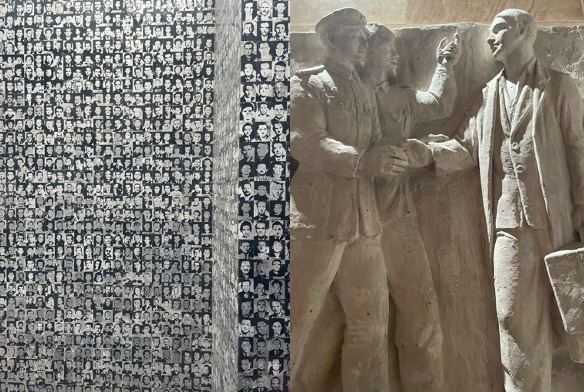
Photos from outside the House of Terror exhibit. Unfortunately pictures were not allowed inside the museum itself.
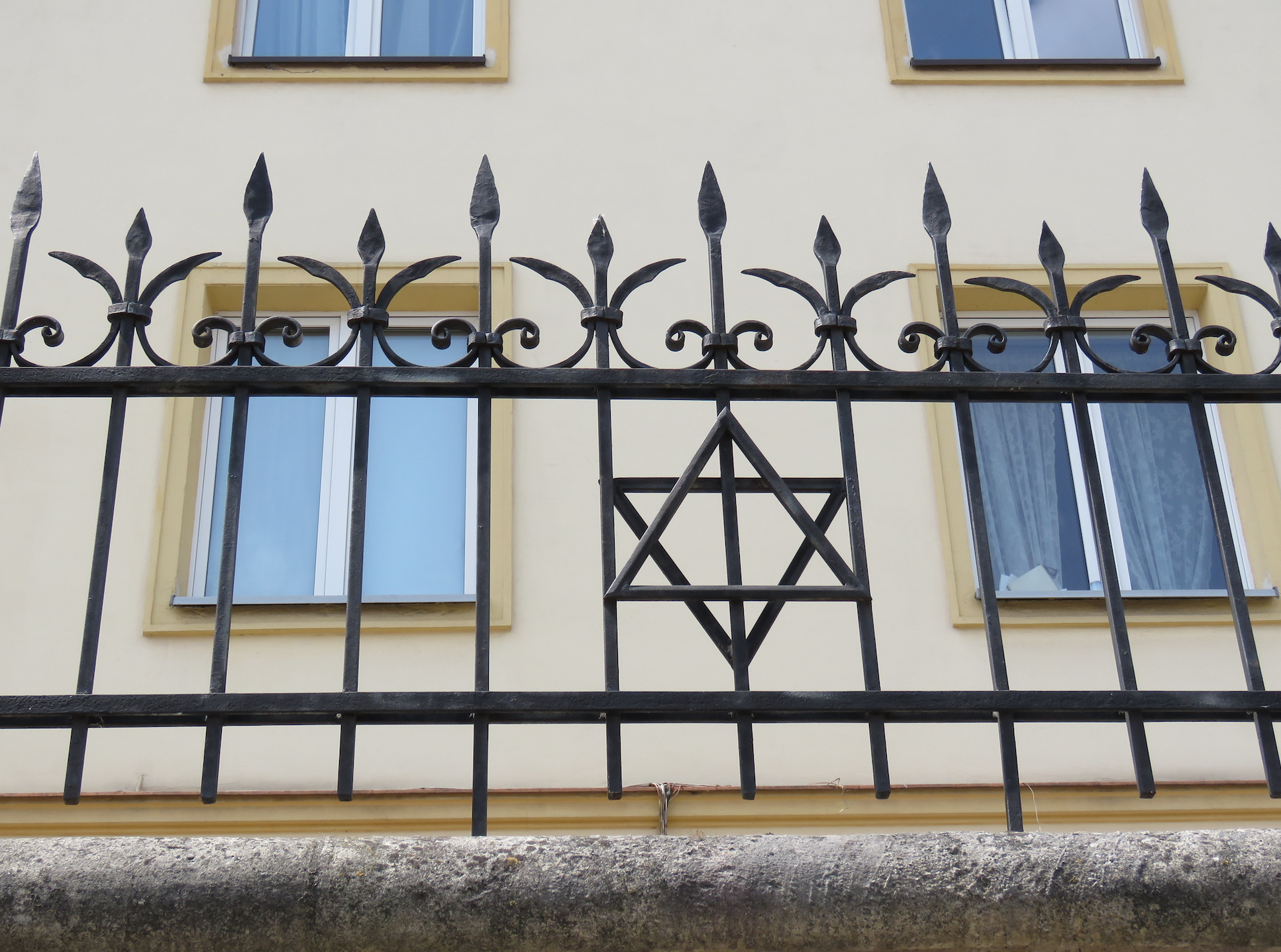
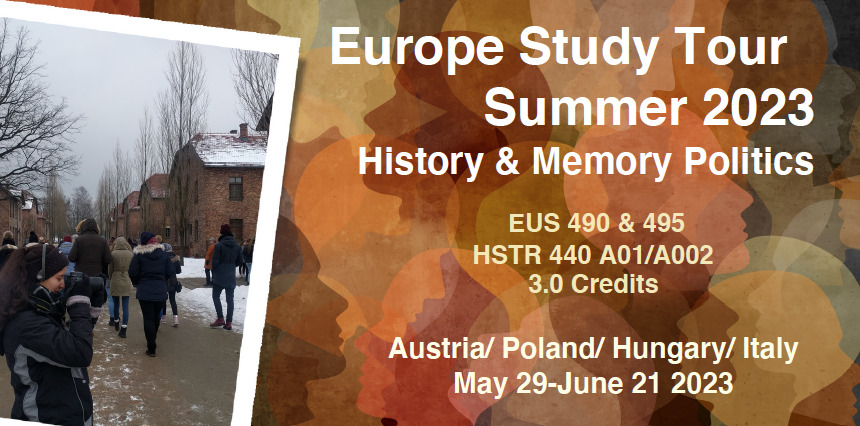
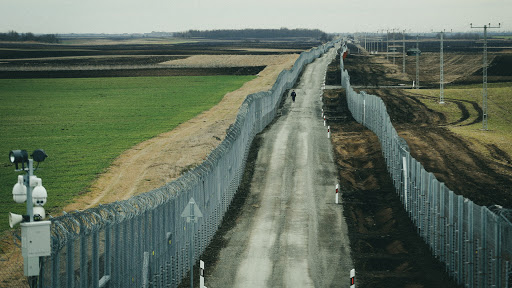 http://www.snapshotsfromtheborders.eu/the-fence-in-hungary/
http://www.snapshotsfromtheborders.eu/the-fence-in-hungary/